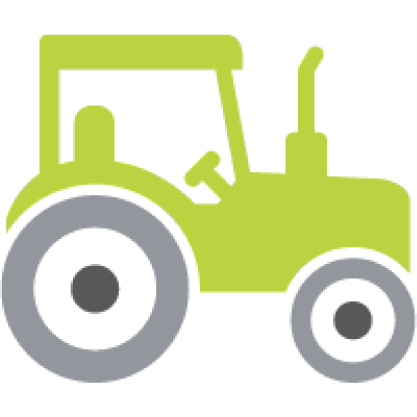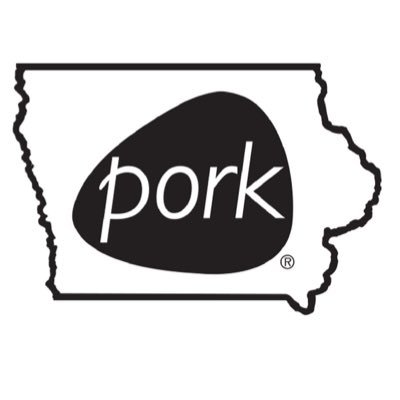Agriculture
This playbook provides guidelines for agricultural operations in Greater Des Moines (DSM) including farms, processing facilities and their suppliers.
Sample: Independent Farmer Risk Profile
The sample risk profile has been determined for independent farmers in DSM. The profile shows frequency, or how many people in a day; duration, or length of typical interaction; and variety, or the number of different people.*
 |
Purchasing and Sales
The Iowan farming industry is essential and critical to the global food supply chain that feeds this nation and beyond and helps fuel the global commodities trade market. In the initial stages of the pandemic, the slowdown or shutdown of hog, cattle, turkey and layer processing plants broke the links in the interdependent supply chain between farms, grain processors, feed mills, animal feeding operations, harvest facilities, distributions channels, retail or institutional users and consumers. The broken links created a ripple effect throughout related industries such as food supply, feed energy, feed ingredients, etc. Instead of continued shortages, however, the agri-food sector has since moved back to near normal conditions with prices and production levels similar to those typically observed in years prior to the pandemic.
|
 |
Meat Production
Beginning in April 2020, closures and slowdowns at meatpacking plants led to significant disruptions and created issues of oversupply and low prices for livestock producers. Closures were especially prominent in the beef and pork industries. Estimates of the loss of production capacity because of plant closures ranging up to 25% for beef slaughter plants, 43% for pork slaughter plants and 15% for chicken slaughter plants. The resulting reduction in demand for livestock and supply of beef and pork caused lower livestock prices and higher meat prices in the spring and summer of 2020. By late summer, steer and hog futures prices returned to pre-pandemic levels and food demand patterns moved towards normalcy.
|
 |
Demand for Ethanol
A combination of sharply lower crude oil prices and a widespread decline in consumer fuel demand gutted ethanol demand to the point at which many ethanol refiners slowed or stopped operations. The U.S. Energy Information Administration says ethanol production last year was 13.93 billion gallons, a decrease of nearly 12% on the year, and the lowest annual total since 2013. About a year later, the industry still is navigating challenging and uncertain times. While many factors contribute to Iowa ethanol producers' challenges, ethanol's comeback is going to be driven by motor gasoline consumption.
|
 |
Seasonality
Concern that dry conditions in Iowa and other parts of the nation will reduce crop yields is helping to drive grain prices to highs farmers haven't seen in nearly a decade. Corn that farmers will deliver in October is inching toward $6 a bushel at Iowa elevators; soybeans are trading around $13. Prices are roughly double what growers have seen in recent years, when they were hammered by oversupply, trade wars and reduced export demand due to the global coronavirus pandemic.
|
 |
Shifting Global Trade
On the one hand, row crops, small grains and even vegetables could see new demand abroad as global trade partners change the pace at which they make major purchases. Importing countries are looking at increasing inventories over the coming year, which is expected to increase global trade of rice and wheat in the next year. Global buyers may look to the U.S. for reliable supplies of some items, such as soybean meal as they reopen and restock.
On the other hand, as a result of disruptions to global food supply chains, many countries, including the U.S., will attempt to institute a “produce and sell locally” strategy to prevent the over-reliance on brittle supply chains. Locally, there will be a move towards a more distributed system, as opposed to mega-processing plants that force a local market to rely heavily on foreign trade.
|
 |
Increasing Ethanol Production
A recovery in economic activity has helped ethanol plants ramp up production as gasoline demand has increased. The Energy Information Agency expects total gasoline consumption for the summer driving season to be up 13.2% when compared to last summer and fuel ethanol production will average 960,000 barrels per day in 2021, up from an average of 910,000 barrels per day in 2020.
|
Health & Sanitation
- Conduct a health screening with all employees prior to entry into the work site, or if possible, before boarding shared transportation in accordance with the most up-to-date recommendations from the local public health department.
- Encourage employees who feel sick to stay home. Employees who have had close contact with someone with COVID-19 should consult CDC guidance on when to self-quarantine.
- Sick workers should stay away from animals, including livestock and pets, during their illness.
- Train all employees on appropriate cleaning and disinfection, hand hygiene and respiratory etiquette.
- Employ PPE in accordance with the most up-to-date recommendations from the local public health department.
- Farmworkers can continue to wear whatever gloves they normally wear while doing fieldwork. Such gloves may include disposable gloves made of lightweight nitrile or vinyl, or heavy-duty rubber work gloves that can be disinfected.
- Encourage employees to wash their hands often with soap and water for at least 20 seconds.
- Workers must have reasonable access to permanent and/or temporary handwashing facilities equipped with soap, potable water and clean, single-use towels.
- Increase the number of handwashing stations to minimize the distance to a station and the likelihood of crowding at stations.
- These sanitizing stations should be in multiple locations on the farm, if feasible, such as the point of entry or exit to a farm field, the location where farmworkers clock in/out and, if possible, in individual containers made available to workers in field settings.
- In addition, to increasing the frequency of handwashing, if hands aren’t visibly soiled or dirty, farmworkers can use hand sanitizer containing at least 60% alcohol, rubbing hands until they are dry.
- Clean high touch surfaces and shared objects once a day.
- You may want to either clean more frequently or choose to disinfect (in addition to cleaning) in shared spaces if certain conditions apply that can increase the risk of infection from touching surfaces:
- High transmission of COVID-19 in your community
- Low number of people wearing masks
- Infrequent hand hygiene
- The space is occupied by people at increased risk for severe illness from COVID-19
- If there has been a sick person or someone who tested positive for COVID-19 in your facility within the last 24 hours, you should clean AND disinfect the space.
- Ensure safe and correct use and storage of cleaners and disinfectants to avoid harm to employees and other individuals. Cleaning products should not be used near children. Staff should ensure that there is adequate ventilation when using these products to prevent attendees or themselves from inhaling toxic vapors.
- Where possible, do not share tools.
- Provide disposable disinfectant wipes or other appropriate disinfectant supplies and required PPE so that commonly touched surfaces can be wiped down, as needed.

Space & Process
- Adjust workflow to allow for a six-foot distance between workers, if feasible.
- Install shields or barriers, such as plastic, between workers, when a six-foot distance is not possible.
- Add additional clock in/out stations (touch-free if available) or additional time for clocking in/out to reduce crowding, if feasible.
- Remove or rearranging chairs and tables or adding visual cue marks in employee break areas to support social distancing between workers.
- Consider reducing crew sizes, staggering work shifts, mealtimes and break times to encourage social distancing.
- Consider having farmworkers alternate rows in fields to facilitate a six-foot distance between each other.
- Consider placing materials (such as harvesting buckets) and produce at a central transfer point instead of transferring directly from one worker to the next.
- Consider grouping healthy workers together into cohorts that include the same workers each day. This can increase the effectiveness of altering normal shift schedules by making sure that groups of workers are always assigned to the same shifts with the same coworkers. Effectiveness is optimized if it is aligned with shared living quarters and shared transportation.
- Control and limit outside traffic into facilities and require visitors to pass a health screen/protocol in accordance with Department of Public Health guidelines.
- Facilities should consider consulting with a heating, ventilation and air conditioning engineer to ensure adequate ventilation in work areas to help minimize workers’ potential exposures.
- If fans such as pedestal fans or hard-mounted fans are used in the facility, take steps to minimize air from fans blowing from one worker directly at another worker. Personal cooling fans should be removed from the workplace to reduce the potential spread of any airborne or aerosolized viruses. If fans are removed, employers should remain aware of, and take steps to prevent, heat hazards.

Communication
- Develop or provide training and messaging (in multiple languages) for social distancing, hand hygiene, donning, doffing and sanitizing PPE and messaging about what to do if you are sick. Consider alternatives to traditional in-person trainings for delivery of this information (e.g., videos). Develop a method to verify employee understanding and participation in these strategies.
- Adopt mass communication methods to communicate COVID-19 prevention and informational messages to employees.
- Add visual cues at six-foot intervals (e.g., floor markings, signs, traffic cones) in cafeterias, knife and gear acquisition areas and other areas where lines may form.
- Audit communication channels to validate the information is being received and followed by all personnel.

 |
Coronavirus Food Assistance Program (CFAP)
USDA is implementing updates to the Coronavirus Food Assistance Program for producers of agricultural commodities marketed in 2020 who faced market disruptions due to COVID-19. This is part of a larger effort to reach a greater share of farming operations and improve USDA pandemic assistance.
|
 |
Downtown Farmers' Market
The Downtown Farmers’ Market has returned for its 2021 seasons as a modified, in-person Market. The scaled-back Market will focus on providing only fresh produce and farm and artisan packaged food from local vendors to the community in a safe, socially distanced way.
|
 |
USDA Rural Development
USDA Rural Development has taken a number of immediate actions to help rural residents, businesses and communities affected by the COVID-19 outbreak. Rural Development will keep our customers, partners and stakeholders continuously updated as more actions are taken to better serve rural America. Check back regularly for updates.
|
 |
Resource Coordination Center for Pig Farmers
The Iowa Department of Agriculture and Land Stewardship has formed a Resource Coordination Center (RCC) to support Iowa livestock producers affected by the COVID-19 supply chain disruptions.
|
Recommended Playbooks
The business function playbooks include takeaways that are specific to professional functions that could be present in any business, regardless of industry.
*We note that these assessments are qualitative and based on expert-led judgment (Johns Hopkins, 2020). Currently, there are not enough detailed data available to enable quantitative risk stratification. Businesses will need to make decisions about re-initiating business activities before there are validated data to know the precise levels of risk.
Legal Disclaimer
The Greater Des Moines Partnership's DSM Forward playbook is
not intended to constitute legal advice or provide specific direction. The preparation of a business continuity or preparations plan should be undertaken with the advice and direction of appropriate specialists and personnel, in consideration of the unique circumstances impacting each business. Third-party websites or material linked to or referenced in DSM Forward are for informational purposes only and do not constitute a recommendation of The Partnership of that material or its authors.
Last updated: 5/14/2021